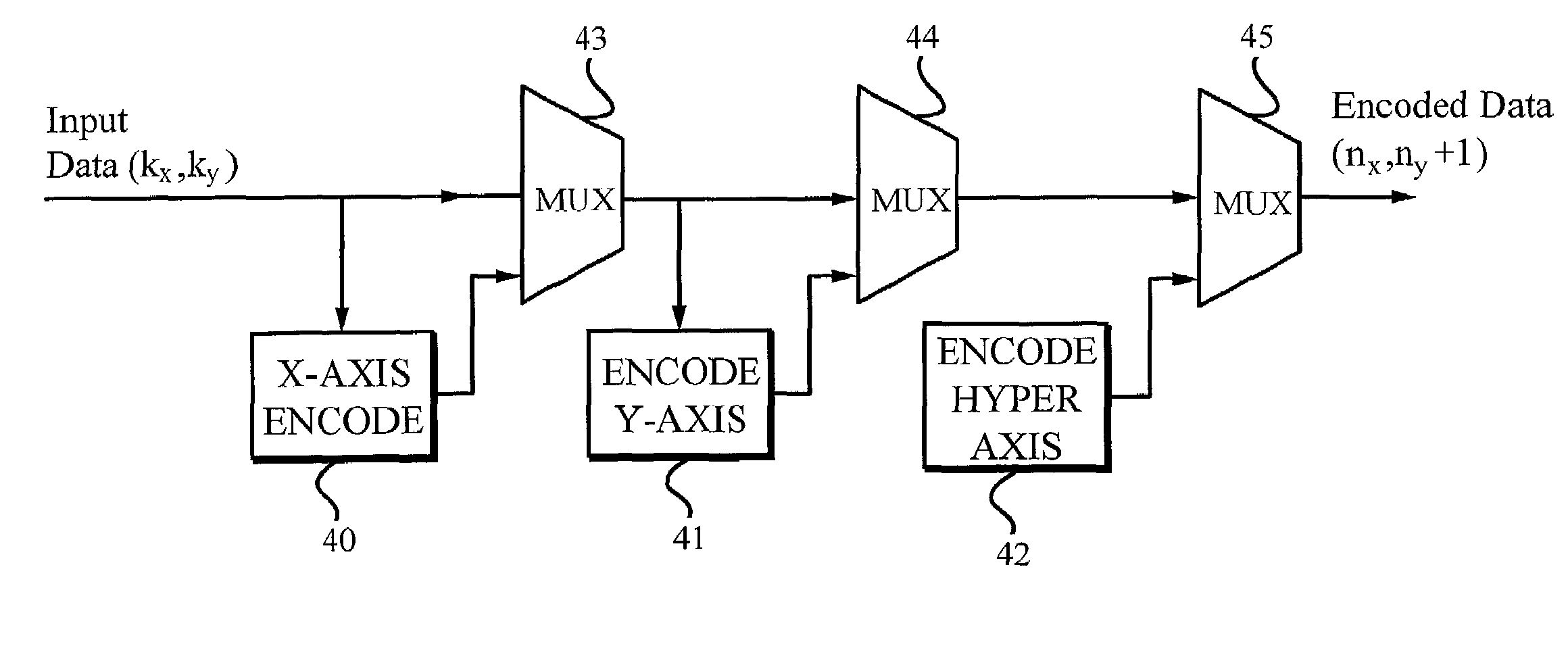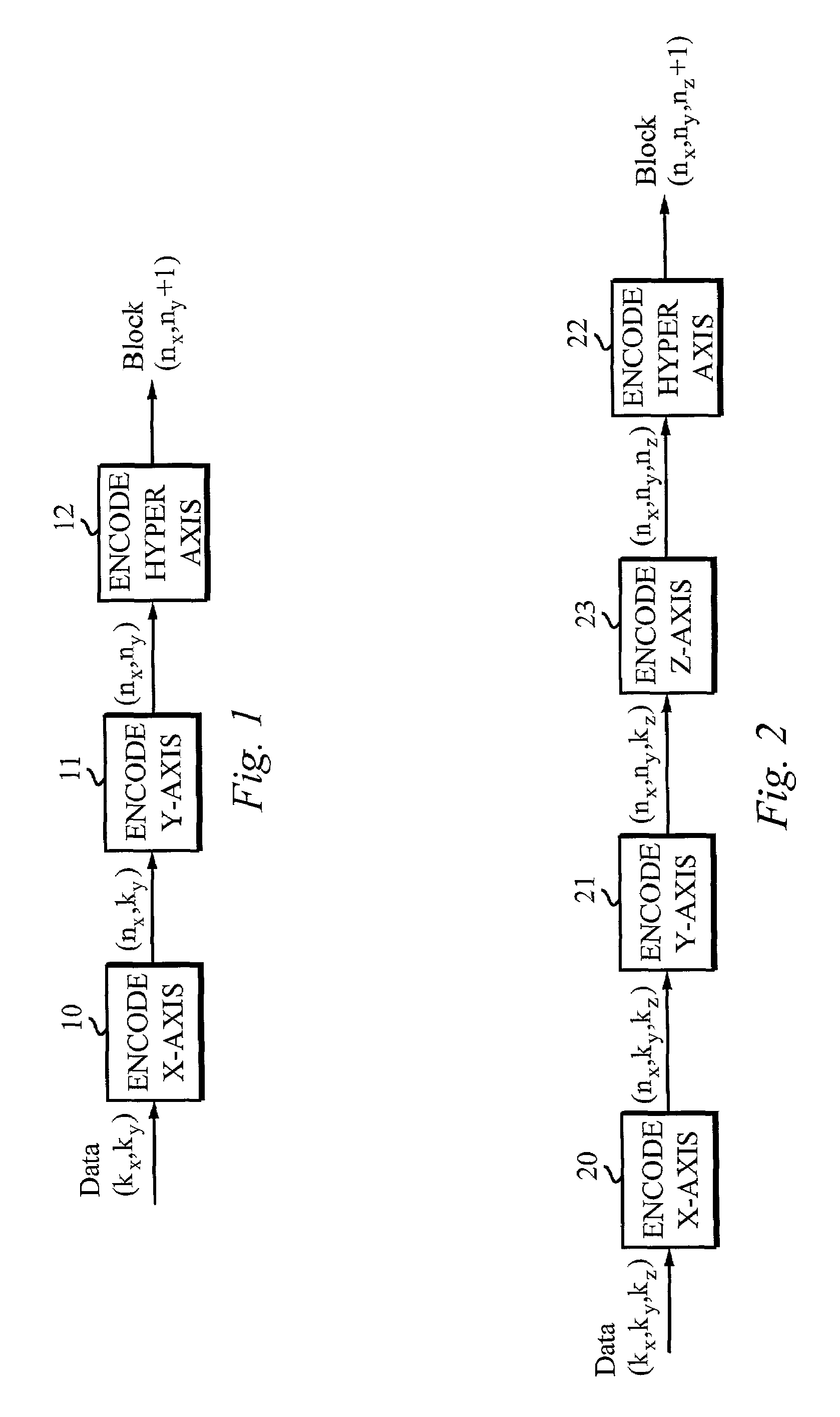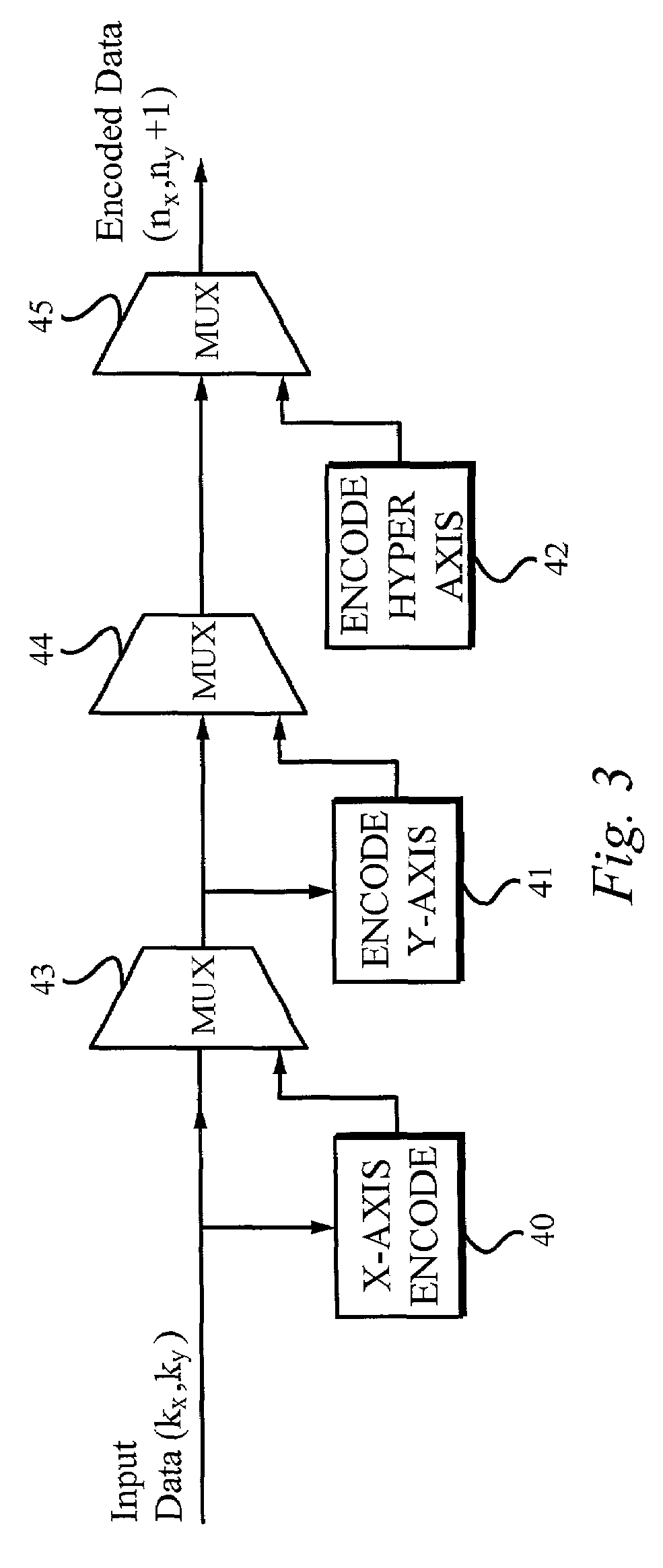Enhanced turbo product codes
a technology of product codes and turbo engines, applied in the direction of code conversion, coding, electrical equipment, etc., can solve the problems of reducing the error floor of the code, reducing the cost of significant increase in the size of the block, and facilitating the acquisition of dmin
- Summary
- Abstract
- Description
- Claims
- Application Information
AI Technical Summary
Benefits of technology
Problems solved by technology
Method used
Image
Examples
Embodiment Construction
[0036]The method for encoding a enhanced turbo product code (eTPC) using hyper-diagonal encoding is shown in the following example. The following diagram illustrates a base 2-D parity only code along with lettering showing the order of the parity computation, whereby each letter in the block represents one bit. Specifically, the parity block shown in the diagram has parameters of (5,4)×(6,4). Thus, the data in the block is consists of 4 rows and 4 columns of data, each row and column having 4 bits within. Since the block is an eTPC block, error correction bits such as extending Hamming codes or parity codes are added to each row and each column to have a block consisting of 5 rows and 5 columns. In addition, a hyper parity row or array may be added to the eTPC block as part of the block or separately. The hyper parity array contains the results of the hyper-diagonal parity calculation of the entire encoded eTPC block, which includes the information bits in the 4×4 block as well as t...
PUM
 Login to View More
Login to View More Abstract
Description
Claims
Application Information
 Login to View More
Login to View More - R&D
- Intellectual Property
- Life Sciences
- Materials
- Tech Scout
- Unparalleled Data Quality
- Higher Quality Content
- 60% Fewer Hallucinations
Browse by: Latest US Patents, China's latest patents, Technical Efficacy Thesaurus, Application Domain, Technology Topic, Popular Technical Reports.
© 2025 PatSnap. All rights reserved.Legal|Privacy policy|Modern Slavery Act Transparency Statement|Sitemap|About US| Contact US: help@patsnap.com



